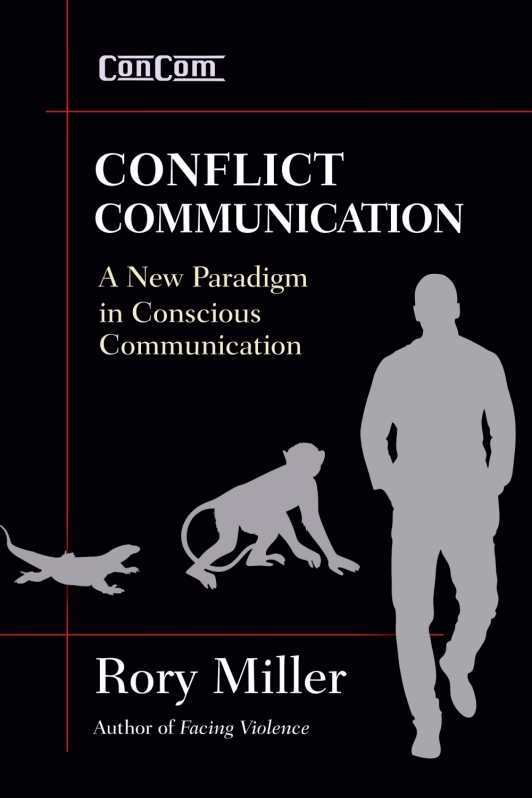Conflict Communication
A New Paradigm in Conscious Communication
- 2015 INDIES Winner
- Honorable Mention, Social Sciences (Adult Nonfiction)
Concise, helpful, and well-organized, this is strongly recommended reading for those interested in learning to verbally de-escalate violence.
“Your reactions to conflict are subconscious, scripted, and for the good of the group,” Rory Miller asserts in his sixth book on violence, Conflict Communication. Based on “ConCom,” the police verbal de-escalation program Miller developed with Marc MacYoung, this book aims to introduce readers to more conscious methods of verbal communication that will sidestep instinctive reactions and promote peaceful solutions.
In the 1950s, sex was the taboo subject not discussed in polite society; today it’s violence. Yet “skill at conflict and violence were survival traits until quite recently,” Miller writes. Evolution has gifted us with three aspects to the brain: the lizard brain (ancient hindbrain) focuses on survival, the monkey brain (limbic system) deals with emotions and social behavior, and the human brain (neocortex) controls rational decision-making. Presenting sample situations and conversations, the book clearly explains how these brain areas influence group dynamics and gives tips for defusing violence through body language and speech.
Miller is careful to caution that he is not a scientist, but rather has theorized backward, taking what worked for him in the corrections field and then backing it up with scientific and psychological concepts, like Maslow’s hierarchy of needs and the three brains model. The book has a highly logical structure, much like an academic treatise, with numerical headings (e.g. “Section 2.10.1 Dealing with Survival Fear”), two diagrams, bulleted lists, and three appendixes. Important points and scenarios are set apart in gray boxes and/or offset in italics. This all ensures an orderly, straightforward reading experience.
The book’s advice is practical and intuitive, yet picks up on tiny details that most people would not notice. For instance, when trying to calm an aggressive person, be sure to use the informal “ya” in place of “you” (which in a tense situation might be taken as a personal challenge), or just say “we” instead. Unspoken communication can be just as important as words, so it is essential to develop “elaborately relaxed body language.”
Although the course that generated this book was originally developed for police and corrections officers, it has now also been taught in hospitals and factories and in a total of eight countries. The stakes will probably be much lower for many of the book’s readers, but these conflict-resolution principles should be applicable to most situations and relationships, including with spouses and coworkers as well as strangers. As Miller concludes in the afterword, “almost everything in this book is stuff you live every day. … But now you see it.”
Concise, helpful, and well-organized, Conflict Communication is strongly recommended for readers interested in the psychology of violence and improving communication skills.
Reviewed by
Rebecca Foster
Disclosure: This article is not an endorsement, but a review. The publisher of this book provided free copies of the book and paid a small fee to have their book reviewed by a professional reviewer. Foreword Reviews and Clarion Reviews make no guarantee that the publisher will receive a positive review. Foreword Magazine, Inc. is disclosing this in accordance with the Federal Trade Commission’s 16 CFR, Part 255.

